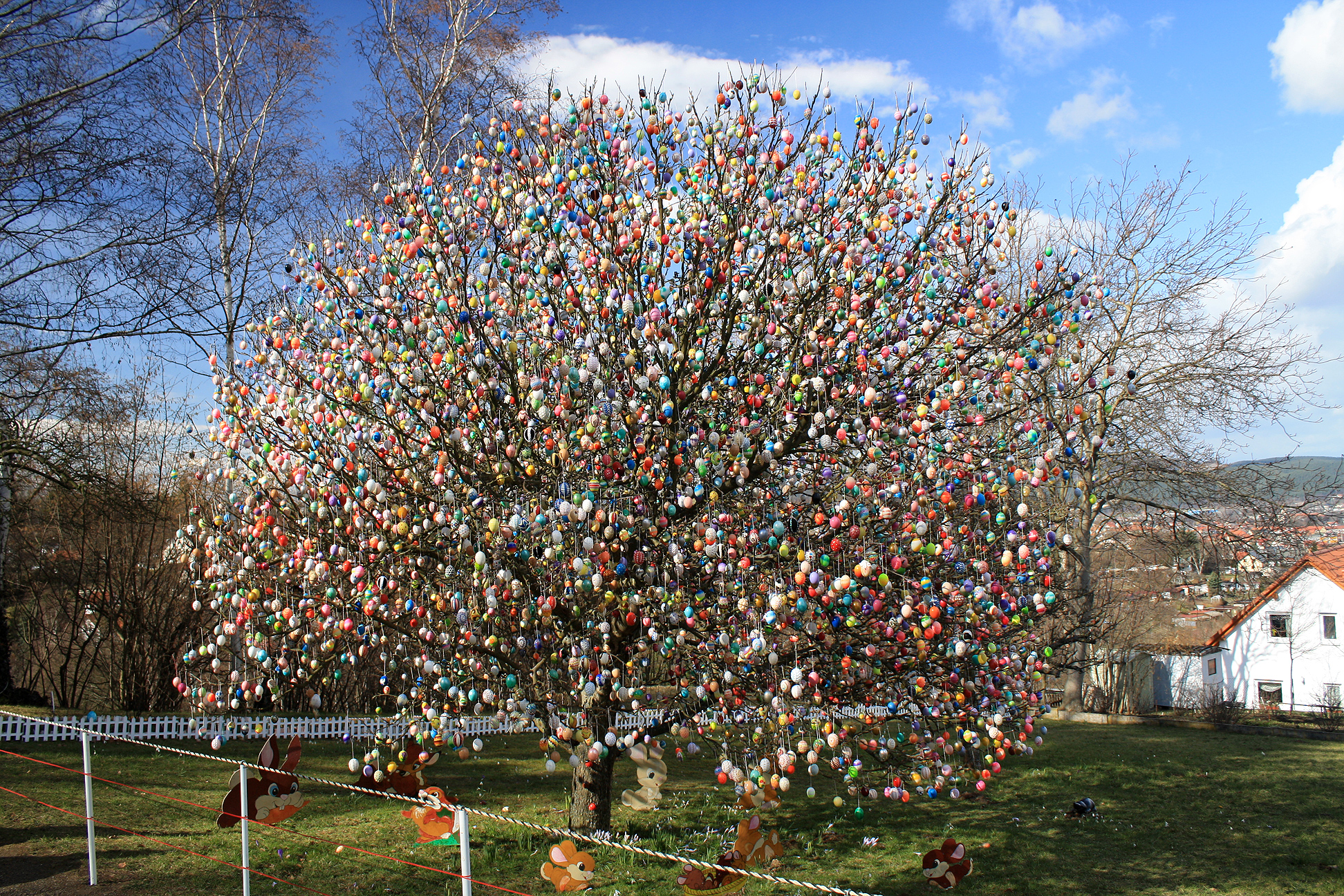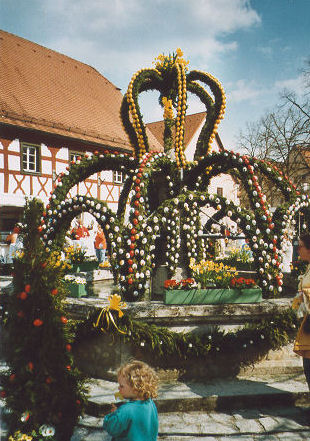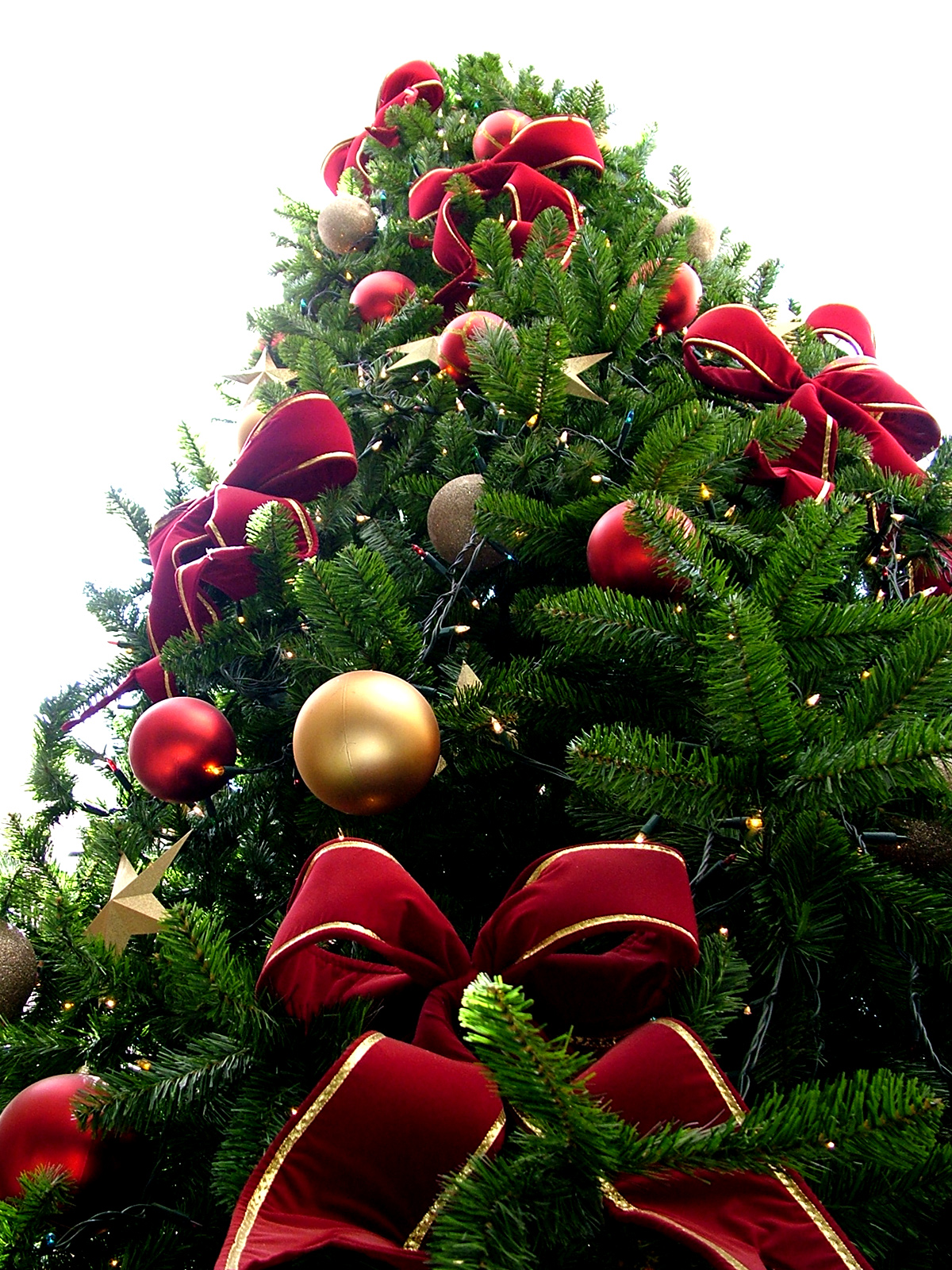|
Easter Egg Tree
A German tradition of decorating trees and bushes with Easter eggs is known as the Ostereierbaum, or Easter egg tree. A notable example is the ''Saalfelder Ostereierbaum'' (Saalfeld Easter egg tree) in Saalfeld, Thuringia. History The tradition in Germany to decorate the branches of trees and bushes with eggs for Easter is centuries old, but its origins have been lost. The egg is an ancient symbol of life all over the world. Eggs are hung on branches of outdoor trees and bushes and on cut branches inside. The custom is found mostly in Germany, Austria and German-speaking Switzerland , but also in other German-influenced places such as Ukraine, Poland, Czech Republic, Hungary, Moravia, and the Pennsylvania Dutch, Pennsylvania Dutch region of the United States. Egg trees are also sometimes decorated on May Day, Christmas, Whitsun, and the summer solstice. Other German Easter traditions include the dressing of public wells as Osterbrunnen, Osterhasen (Easter Bunny, Easter Hares) and ... [...More Info...] [...Related Items...] OR: [Wikipedia] [Google] [Baidu] |
Osterbrunnen
The Osterbrunnen (Easter Well or Easter Fountain) is a German tradition of decorating public wells or fountains with Easter eggs for Easter. It began in the early 20th century in the Franconian Switzerland region of Upper Franconia but has spread to other regions. The decoration is usually kept from Good Friday until two weeks after Easter. History Decorating a well for Easter honours water, essential for life, and Easter, the feast of renewed life. In addition to eggs (now often artificial, to guard against vandalism), paper ribbons called "Pensala" and garlands of evergreens are woven around well-heads or formed into crowns over them. In several locations flowers are also used. Franconian Switzerland (german: Fränkische Schweiz), so called for its rugged rock outcroppings, lies in the region of Upper Franconia in northern Bavaria. The tradition of Osterbrunnen began there in the early 20th century. The Osterbrunnen in Aufseß is said to have been first decorated around 190 ... [...More Info...] [...Related Items...] OR: [Wikipedia] [Google] [Baidu] |
Christmas Tree
A Christmas tree is a decorated tree, usually an evergreen conifer, such as a spruce, pine or fir, or an artificial tree of similar appearance, associated with the celebration of Christmas. The custom was further developed in early modern Germany where German Protestant Christians brought decorated trees into their homes. It acquired popularity beyond the Lutheran areas of Germany and the Baltic governorates during the second half of the 19th century, at first among the upper classes. The tree was traditionally decorated with "roses made of colored paper, apples, wafers, tinsel, ndsweetmeats". Moravian Christians began to illuminate Christmas trees with candles, which were often replaced by Christmas lights after the advent of electrification. Today, there is a wide variety of traditional and modern ornaments, such as garlands, baubles, tinsel, and candy canes. An angel or star might be placed at the top of the tree to represent the Angel Gabriel or the Star of Bethle ... [...More Info...] [...Related Items...] OR: [Wikipedia] [Google] [Baidu] |
Panty Tree
A panty tree (or bra tree or bra/panty tree) is a tree underneath a ski lift decorated with bras, panties, and Mardi Gras beads cast off by skiers riding the chair lift. History An experienced ski patroller in Aspen, Colorado, has claimed that the first panty tree was under the Bell Mountain ski lift at Aspen Mountain in the early 1980s. A discussion in 2006 in the letters pages of the ''Skiing Heritage'' journal said "it is believed" that the practice might have begun in the late 1950s. This panty tree was soon copied at nearby Vail Ski Resort and then numerous other ski areas across North America. The first panty tree in Vail was found chopped down one morning in 1997, but skiers picked another tree to continue the tradition. This second tree was used in a 2005 liqueur company advertisement, which stated, "You just recognized a pair of panties in the Sun Down Bowl tree...The conversation is waiting." In 2010, this tree was also chopped down to make way for a new ski lift. I ... [...More Info...] [...Related Items...] OR: [Wikipedia] [Google] [Baidu] |
Shoe Tree (decorated Plant)
A shoe tree is a tree (or occasionally, a powerline pole or other wooden object) that has been festooned with old shoes, generally through the act of shoe tossing. Shoe trees are generally located alongside a major local thoroughfare, and may have a theme (such as high-heeled shoes). In 2017 there were at least forty-five such shoe trees in the United States. List of shoe trees *Shoe Tree: Cherokee, Alabama *Sardis Shoe Tree: Sardis, Arkansas *Bra Tree: Flagstaff, Arizona *Shoe Tree: Tonto Basin, Arizona *Shoe Tree Unloved by the Elderly: Big Bear Lake, California *Shoe Tree: Hallelujah Junction, California *Shoe Tree: Long Barn, California *Ono Shoe Tree: Ono, California *Shoe Tree: Ravendale, California *Shoe Tree: Rice, California *Shoe Tree: Blairsville, Georgia *Shoe Tree: St. Simons Island, Georgia *Shoe Tree - Only 3 pairs: Kuna, Idaho *Shoe Tree: Highland Park, Illinois *Shoe Tree: Ottawa, Illinois *Shoe Tree: Woodstock, Illinois *Shoe Tree: Albany, Indiana *Shoe Tree: ... [...More Info...] [...Related Items...] OR: [Wikipedia] [Google] [Baidu] |
Computus
As a moveable feast, the date of Easter is determined in each year through a calculation known as (). Easter is celebrated on the first Sunday after the Paschal full moon, which is the first full moon on or after 21 March (a fixed approximation of the March equinox). Determining this date in advance requires a correlation between the lunar months and the solar year, while also accounting for the month, date, and weekday of the Julian or Gregorian calendar. The complexity of the algorithm arises because of the desire to associate the date of Easter with the date of the Jewish feast of Passover which, Christians believe, is when Jesus was crucified. It was originally feasible for the entire Christian Church to receive the date of Easter each year through an annual announcement by the Pope. By the early third century, however, communications in the Roman Empire had deteriorated to the point that the church put great value in a system that would allow the clergy to determine ... [...More Info...] [...Related Items...] OR: [Wikipedia] [Google] [Baidu] |
Guinness World Records
''Guinness World Records'', known from its inception in 1955 until 1999 as ''The Guinness Book of Records'' and in previous United States editions as ''The Guinness Book of World Records'', is a reference book published annually, listing world records both of human achievements and the extremes of the natural world. The brainchild of Sir Hugh Beaver, the book was co-founded by twin brothers Norris and Ross McWhirter in Fleet Street, London, in August 1955. The first edition topped the best-seller list in the United Kingdom by Christmas 1955. The following year the book was launched internationally, and as of the 2022 edition, it is now in its 67th year of publication, published in 100 countries and 23 languages, and maintains over 53,000 records in its database. The international franchise has extended beyond print to include television series and museums. The popularity of the franchise has resulted in ''Guinness World Records'' becoming the primary international authority ... [...More Info...] [...Related Items...] OR: [Wikipedia] [Google] [Baidu] |
List Of Quercus Species
The genus ''Quercus'' contains about 500 species, some of which are listed here. The genus, as is the case with many large genera, is divided into subgenera and sections. Traditionally, the genus ''Quercus'' was divided into the two subgenera ''Cyclobalanopsis'', the ring-cupped oaks, and ''Quercus'', which included all the other sections. However, a comprehensive revision in 2017 identified different relationships. Now the genus is commonly divided into a subgenus ''Quercus'' and a sugenus ''Cerris'', with ''Cyclobalanopsis'' included in the latter. The sections of subgenus ''Quercus'' are mostly native to the New World, with the notable exception of the white oaks of sect. ''Quercus'' and the endemic Quercus pontica. In contrast, the sections of the subgenus ''Cerris'' are exclusively native to the Old World. Legend Species with evergreen foliage ("live oaks") are tagged '#'. Species in the genus have been recategorized between deciduous and evergreen on numerous occasions, alt ... [...More Info...] [...Related Items...] OR: [Wikipedia] [Google] [Baidu] |
Rostock
Rostock (), officially the Hanseatic and University City of Rostock (german: link=no, Hanse- und Universitätsstadt Rostock), is the largest city in the German state of Mecklenburg-Vorpommern and lies in the Mecklenburgian part of the state, close to the border with Pomerania. With around 208,000 inhabitants, it is the third-largest city on the German Baltic coast after Kiel and Lübeck, the eighth-largest city in the area of former East Germany, as well as the 39th-largest city of Germany. Rostock was the largest coastal and most important port city in East Germany. Rostock stands on the estuary of the River Warnow into the Bay of Mecklenburg of the Baltic Sea. The city stretches for about along the river. The river flows into the sea in the very north of the city, between the boroughs of Warnemünde and Hohe Düne. The city center lies further upstream, in the very south of the city. Most of Rostock's inhabitants live on the western side of the Warnow; the area east of th ... [...More Info...] [...Related Items...] OR: [Wikipedia] [Google] [Baidu] |
Syringa
''Syringa'' is a genus of 12 currently recognized species of flowering plant, flowering woody plants in the olive family or Oleaceae called lilacs. These lilacs are native to woodland and scrub from southeastern Europe to eastern Asia, and widely and commonly cultivated in temperate zone, temperate areas elsewhere.Flora Europaea''Syringa''/ref>Flora of China丁香属 ding xiang shu ''Syringa''/ref>Flora of Pakistan''Syringa''/ref>Germplasm Resources Information Network''Syringa'' The genus is most closely related to ''Ligustrum'' (privet), classified with it in Oleaceae tribus Oleeae subtribus Ligustrinae.University of Oxford, Oleaceae information siteNew classification of the Oleaceae/ref> Lilacs are used as food plants by the larvae of some moth species, including copper underwing, scalloped oak and Svensson's copper underwing. Description They are small trees, ranging in size from tall, with stems up to diameter. The leaf, leaves are opposite (occasionally in whorls o ... [...More Info...] [...Related Items...] OR: [Wikipedia] [Google] [Baidu] |






.jpg)


